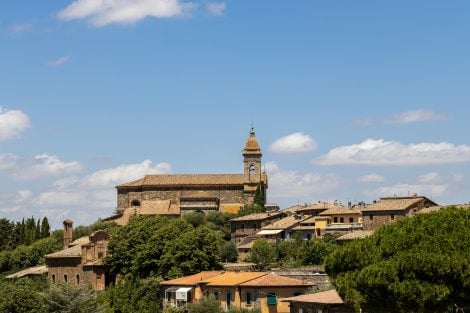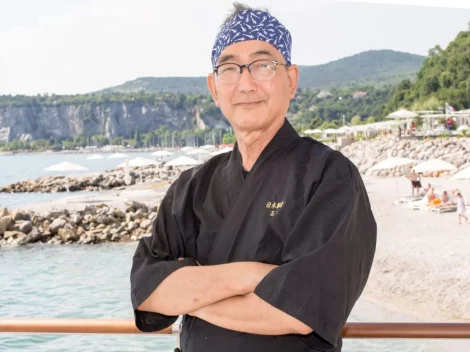Chianti Classico is a denomination that continues to set the standard. For the history it bears on its shoulders, of course, but also for its remarkable ability to renew itself while remaining true to its essence: because if, on one hand, it is the guardian of tradition, on the other, it continues to be fertile ground for investments aimed at enhancing the quality and distinctiveness of its wines. It is within this scenario that Castello di Gabbiano fits perfectly: we are in San Casciano in Val di Pesa, on a 12th-century estate that now looks to the future with the solidity of Treasury Wine Estates, the international group that has chosen to invest here to strengthen its presence in Italian wine.
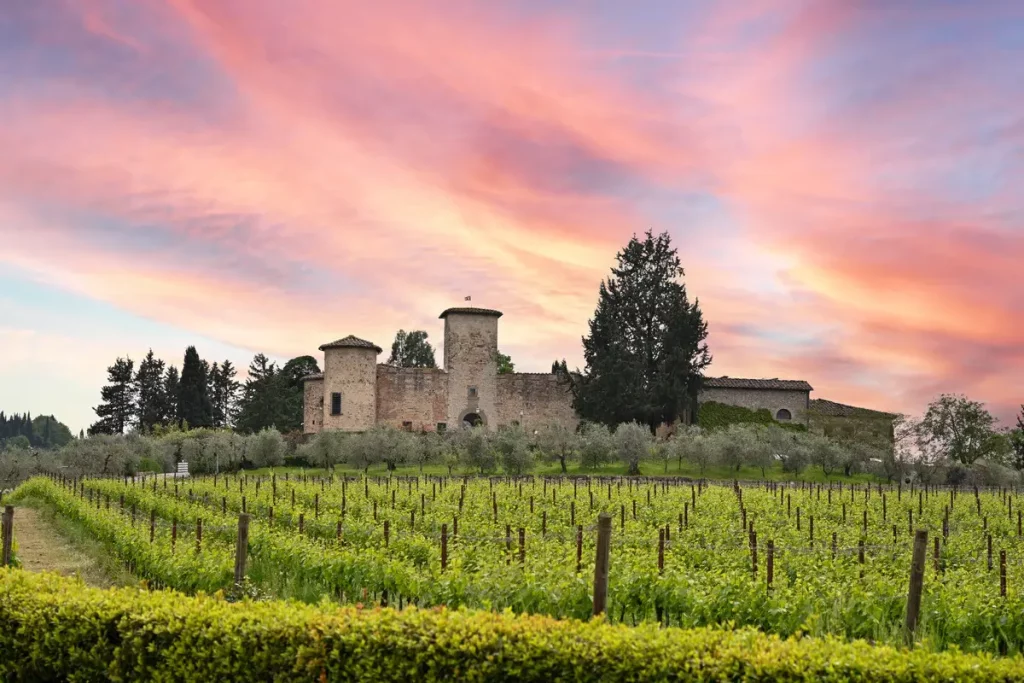
Castello di Gabbiano © Francesco Vignali Photography
The wine-growing vocation of this place dates back a long way. The first cellars were built in 1124, when the castle belonged to the Bardi family, Florentine bankers who, in the 13th century, expanded it with Guelph-style battlements. In the 15th century, it passed to the Soderini, who transformed the residence into a farm, and after various vicissitudes and a long period of abandonment, the castle was reborn in the 17th century, with subsequent restorations and extensions that managed to preserve the charm of a place where wine has always been the driving force.
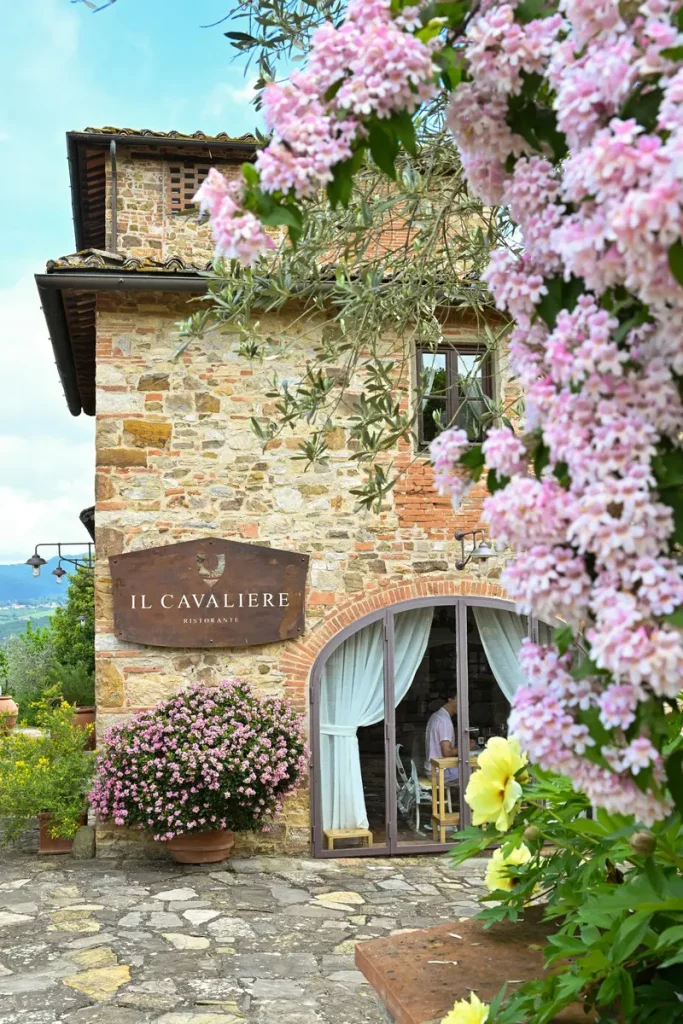
Castello di Gabbiano © Francesco Vignali Photography
The experience of Castello di Gabbiano, however, does not stop at wine. Today, the estate also offers charming hospitality, with rooms created within the historic residence and a restaurant, Il Cavaliere, which offers traditional Tuscan cuisine reinterpreted with a modern twist: handmade fresh pasta, grilled meats, garden vegetables, and selections of local cured meats and cheeses. A concept that combines Tuscan tradition with contemporary creativity, designed to engage in dialogue with the wines of the Castello. In summer, tables open onto a terrace overlooking the hills, while inside, the warm atmosphere of the historic mansion prevails. The result is an experience that accompanies visitors seamlessly from glass to plate.
Castello di Gabbiano: from Sangiovese to international varieties
Today the estate extends over more than 150 hectares of vineyards, the largest in the province of Florence for Chianti Classico, at altitudes between 250 and 350 metres. The heart of production is Sangiovese.
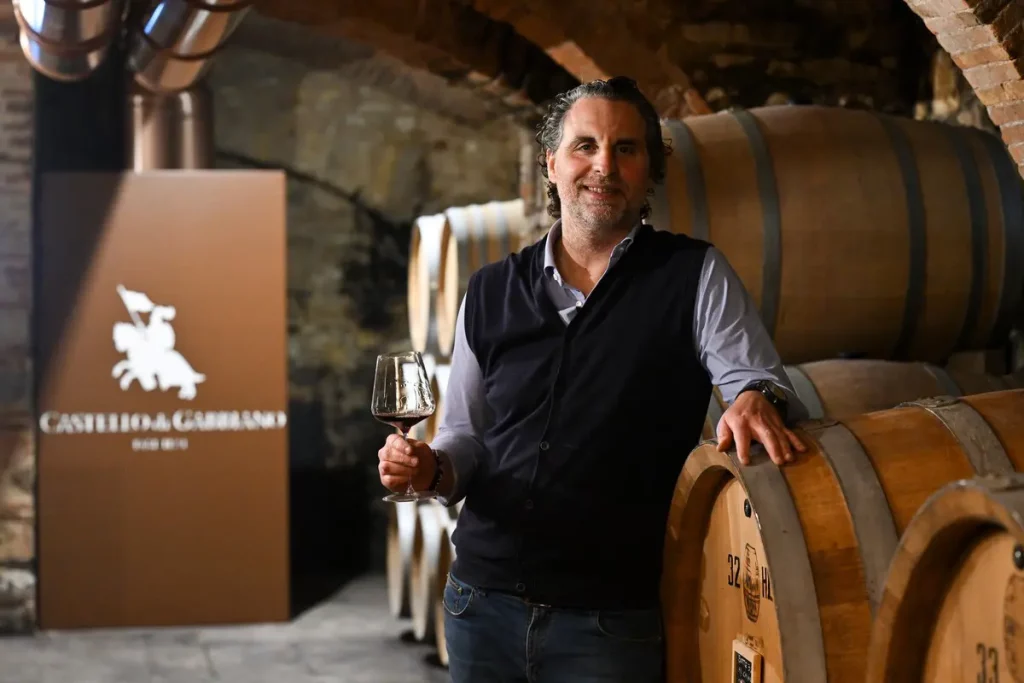
Castello di Gabbiano © Francesco Vignali Photography
The Chianti Classico from Castello di Gabbiano is direct, with notes of crisp fruit and an agile sip, while the Riserva raises the bar with greater density, finely chiselled tannins and a flavour profile that allows space for spices and undergrowth. Sangiovese reaches its peak in the two Gran Selezioni, Bellezza and Cerbaiola, both produced from single vineyards and therefore true territorial expressions linked to their crus. These are wines that move without stylistic excess, showing a technical precision that is ever cleaner than in the past.
Alongside these labels, the winery also produces wines that include international varieties such as Cabernet Sauvignon and Merlot—choices that look especially to a global audience, with convincing results in terms of balance and the ability to unite structure and drinkability. Much credit goes to Federico Cerelli, the oenologist who has been with the company since 2011, and who has led the recent modernisation of the winery, introducing an innovative fermentation system with mechanised and computerised cap management—developed in collaboration with an engineer specialising in watchmaking.
Chianti Classico Gran Selezione Bellezza — Vertical tasting from 2000 to 2020
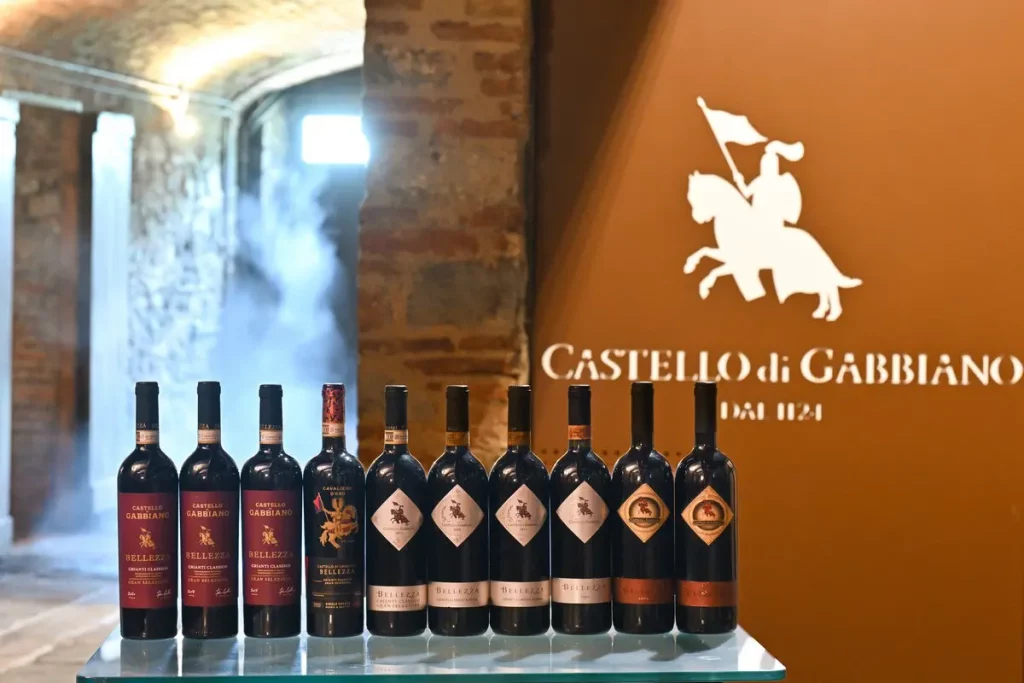
We go back almost thirty years to the 1997 vintage of Bellezza, the year the wine was first released on the market as an IGT Toscana.
Those were the years of the Supertuscans, and this wine, the result of a vineyard planted in 1993, was one of their witnesses. In 2008, it became Chianti Classico, in 2009 the label bore the name Vigna Bellezza, and by 2011, it was among the first 26 wines to carry the Gran Selezione designation—the very year the Consorzio introduced this new typology. As mentioned, it is made exclusively from Sangiovese grapes from a single vineyard of 13 hectares, five of which were replanted in 2007 and now produce the wine. The remaining eight hectares were replanted in 2023 and will yield their first useful fruit in a few years. Depending on the vintage, production ranges from 15,000 to 20,000 bottles, due to the rigorous selection of grapes carried out in the vineyard.
Wine scores (out of 100)
96/100
Bellezza 2000
A full 25 years have passed, yet the wine still shows incredible vitality. The nose offers aromas of ripe fruit followed by hints of undergrowth, bark, and a touch of rust. The palate retains a lively freshness, with tannins well integrated into the body and a savoury edge that drives a beautifully long finish.
92/100
Bellezza 2005
Warm, balsamic, mentholated notes dominate the bouquet, with a touch of wood—now well integrated but still clearly present. The palate reveals notable character, with vigorous, imposing tannins and layers of ripe black fruit emerging gradually. Here too, the savoury note enhances the fine acidity.
90/100
Chianti Classico Bellezza Ris. 2009
The 2008 was the first vintage to bear the Chianti Classico DOC, while from 2009 it was released as a Riserva. The wine appears complex from the outset, with notes of cinchona and black fruits dominating. The palate is structured, showing a significant extraction marked by firm, slightly astringent tannins. Nevertheless, the savoury quality is lovely, and the finish is particularly meaty, sanguine, and rich.
96/100
Chianti Classico Bellezza Ris. 2010
A true thoroughbred, born of a splendid, fresh, and balanced vintage. The nose still offers primary sensations, with aromas ranging from small red fruits to herbal touches, from undergrowth to noble resins. The palate is energetic and vibrant, with fine, precise tannins and a long, flavoursome finish.
91/100
Chianti Classico Gran Selezione Bellezza 2011
With the introduction of the Gran Selezione classification, this wine immediately qualified, being 100% Sangiovese from a single vineyard. The vintage was very warm, reflected in its notable alcohol level. The wine is dense, with warm notes on the nose, but the fruit never veers into over-ripeness. On the palate, the tannins are pointed yet creamy, and the finish delivers both menthol freshness and savoury depth.
93/100
Chianti Classico Gran Selezione Bellezza 2013
Up to the 2013 vintage, barriques were used predominantly, with a significant proportion of new oak. At first, a touch of alcohol appears, then the nose reveals notes of alchermes, a hint of truffle, and a distinct cherry sensation. Despite what the nose might suggest, the palate is fresh, crisp, savoury, and marked by lively but never astringent tannins.
94/100
Chianti Classico Gran Selezione Bellezza 2017
A vintage that marks a clear stylistic shift: the use of larger barrels, gentler extractions, and wines that are brighter and more graceful. Despite the hot 2017 season, the wine offers a beautiful sanguine nose, with tones of small fruit, light spices, and orange peel. The palate is fleshy, the tannins silky, and the sip fresh, graceful, and deep, thanks to exemplary sapidity.
95/100
Chianti Classico Gran Selezione Bellezza 2018
A fresh vintage and a now well-defined style deliver a truly fine wine—an archetypal Sangiovese. The nose is complex and multifaceted, with notes of red fruit, pepper, and blood orange. The palate is slender, juicy, and exquisitely elegant, and thanks to its savouriness, the finish is long and beautifully clean.
97/100
Chianti Classico Gran Selezione Bellezza 2019
A wonderful vintage and an equally wonderful wine. The 2019 Gran Selezione is undoubtedly the one that impressed us most, with an extraordinarily refined nose (ranging from wild berries to rose and cherry) and a graceful, elegant palate where everything seems perfectly in place—from tannins to fresh acidity.
94/100
Chianti Classico Gran Selezione Bellezza 2020
A great wine despite its youth. It appears denser and more compact than the previous vintage (partly due to a warmer summer). The fruit is ripe and vibrant, with a spicy note preceding an austere palate, marked by firm yet never intrusive tannins. The structure is balanced by acidity, and savoury nuances emerge, particularly in the finish. This is the wine currently on the market—an exemplary version that promises great satisfaction in the future. We awarded it Tre Bicchieri in the Gambero Rosso Vini d’Italia 2026 guide.
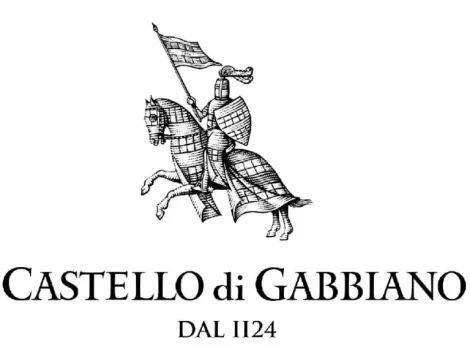
Castello di Gabbiano
San Casciano in Val di Pesa (FI)
fraz. Mercatale Val di Pesa
via Gabbiano, 22
055 821 053
castellogabbiano.it
FB: castellogabbiano
IG: castellodigabbiano
X: castellogabbiano

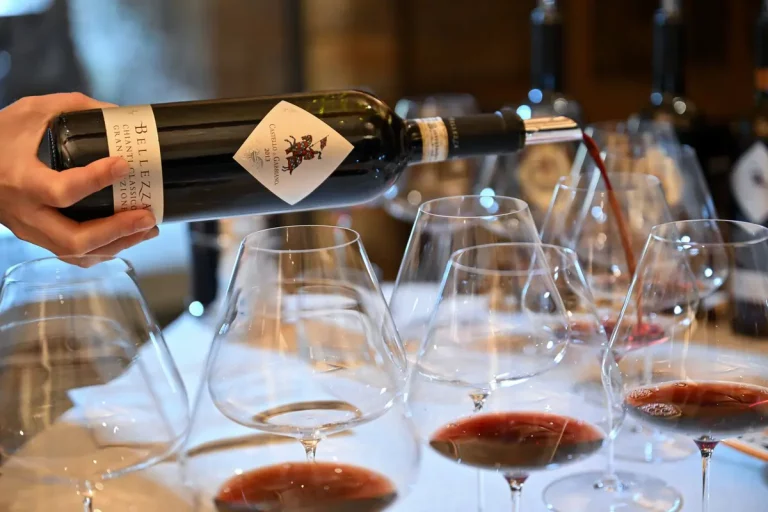
 Italian wineries rely on LinkedIn and Instagram for online communication
Italian wineries rely on LinkedIn and Instagram for online communication What does it take to feed the Italian rugby team?
What does it take to feed the Italian rugby team?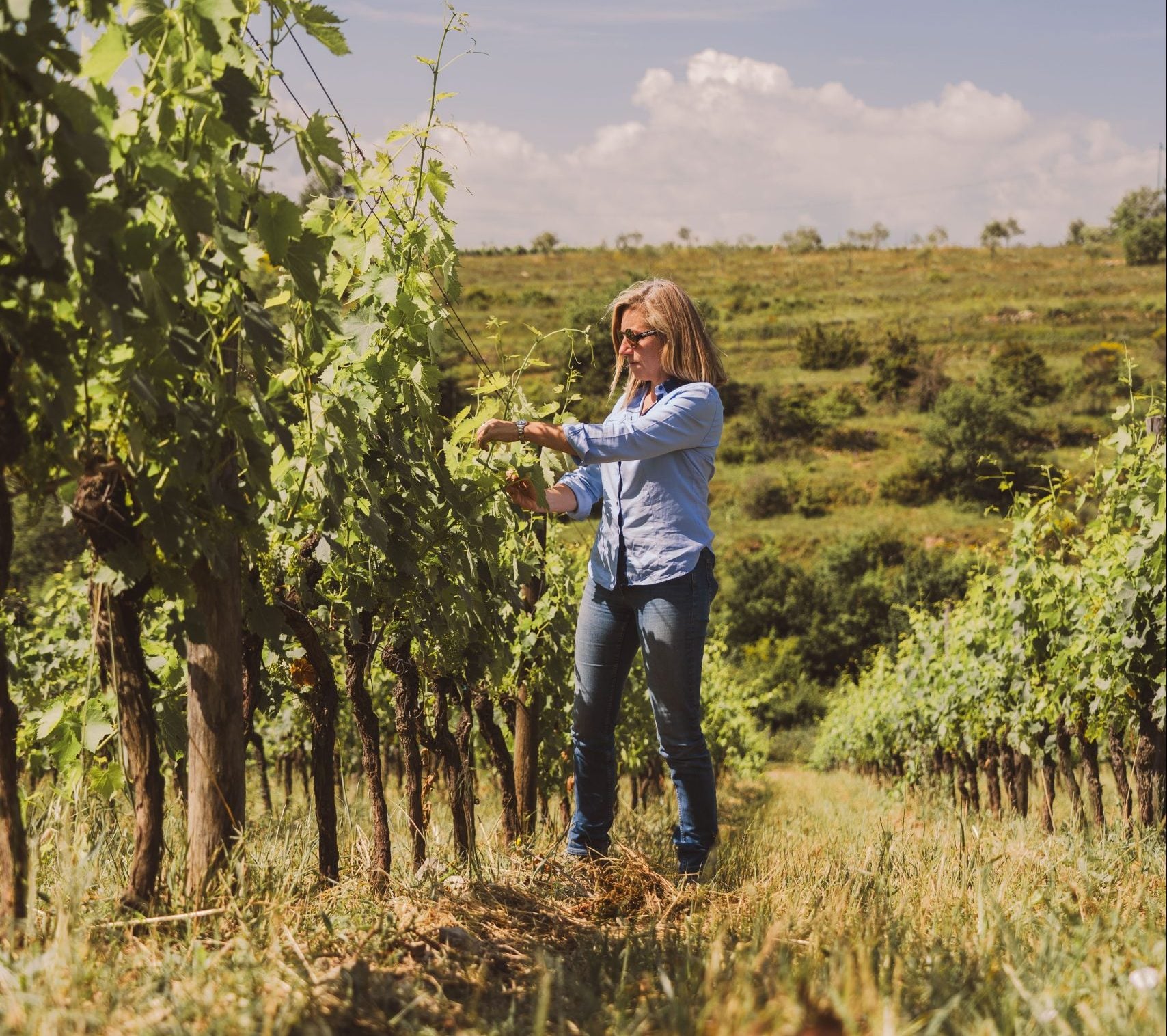 Why it's an organic focus for Bertinga
Why it's an organic focus for Bertinga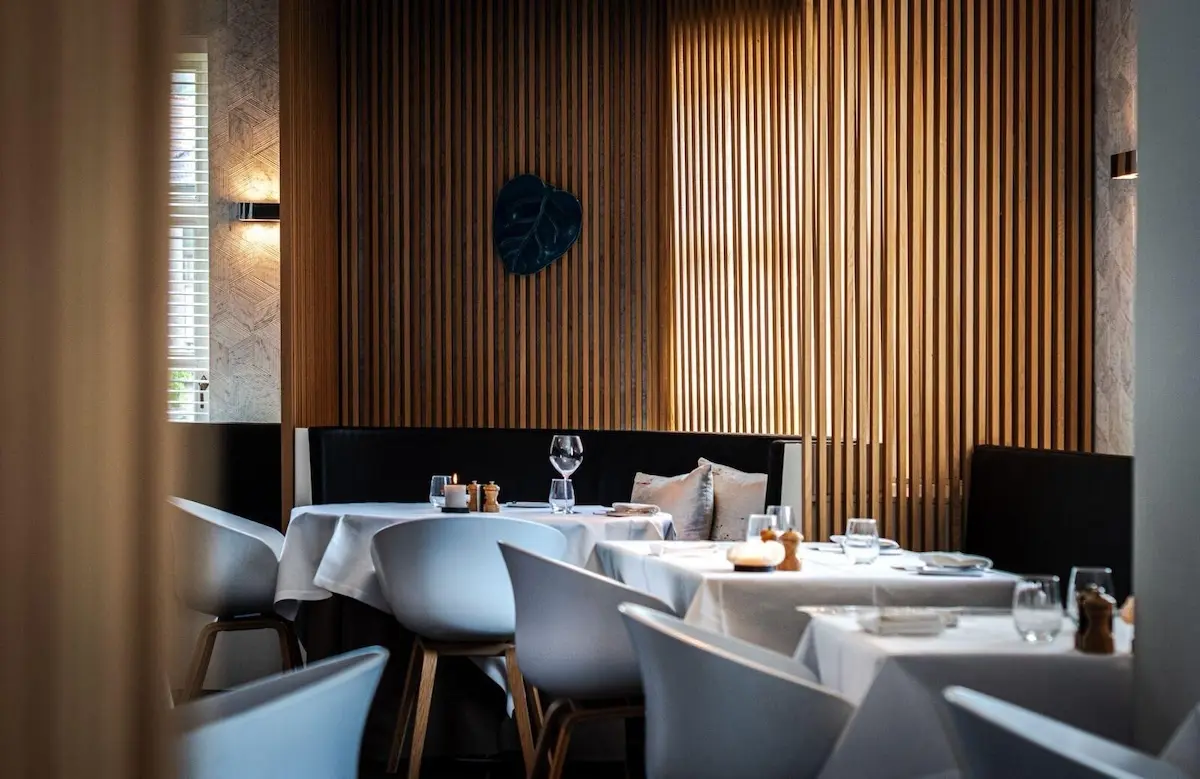 Six of Brussels' best Italian restaurants
Six of Brussels' best Italian restaurants Where to have a festive brunch in Florence
Where to have a festive brunch in Florence


